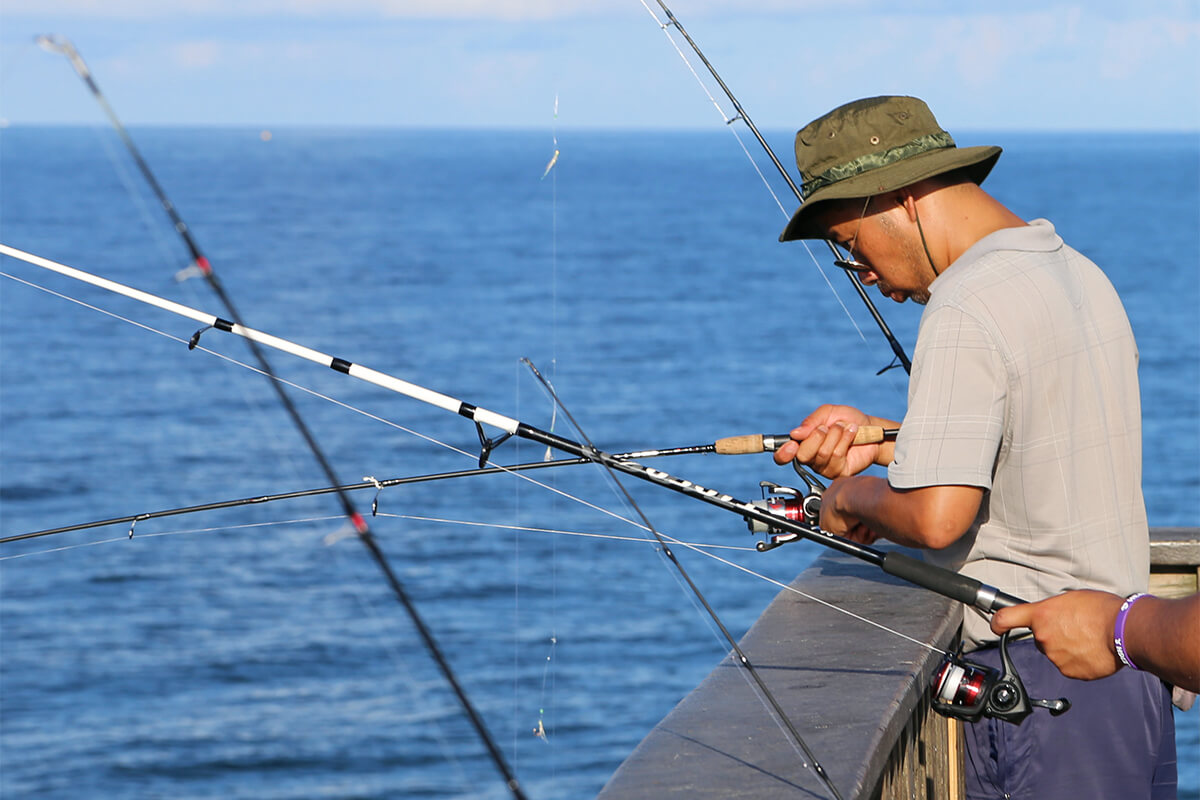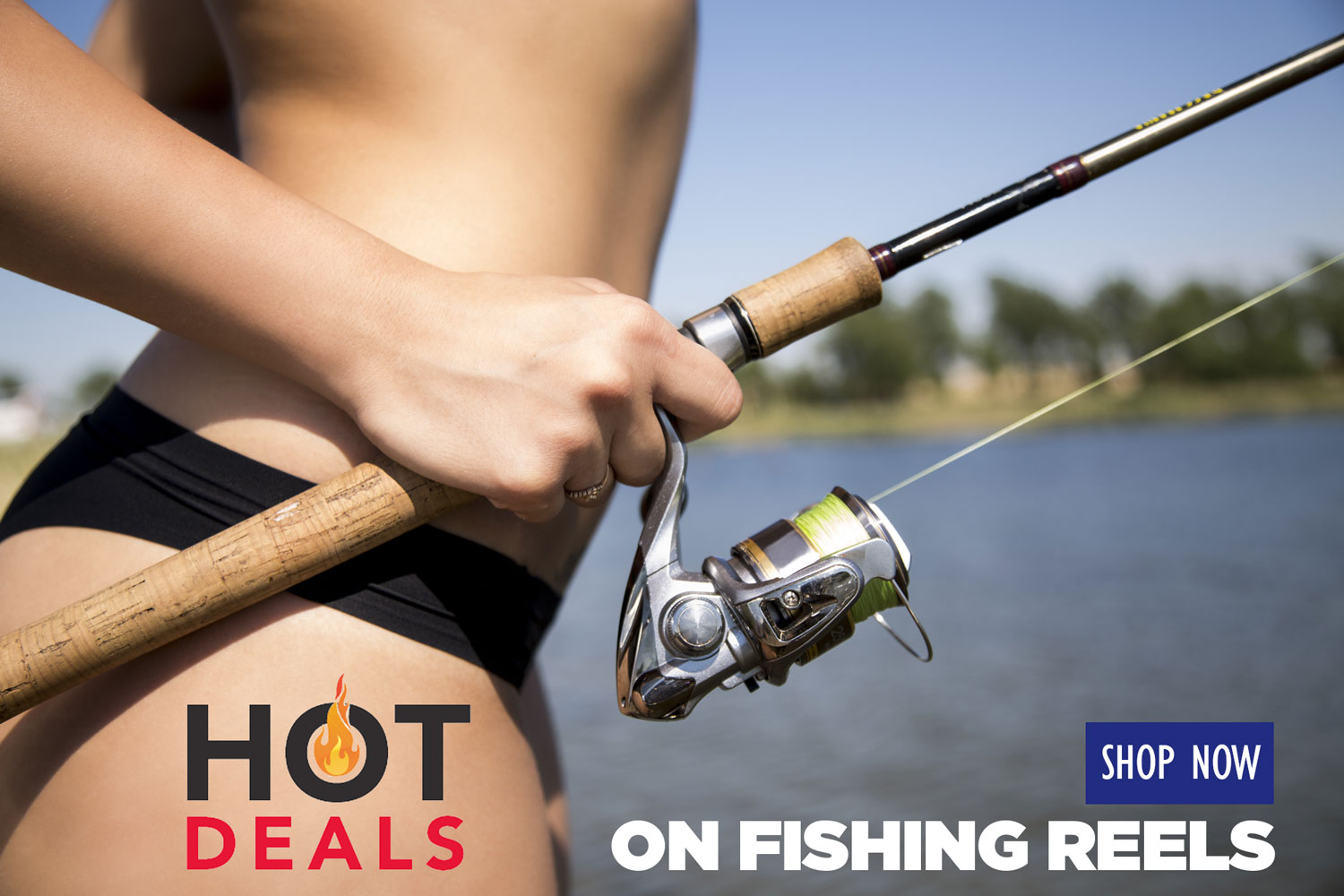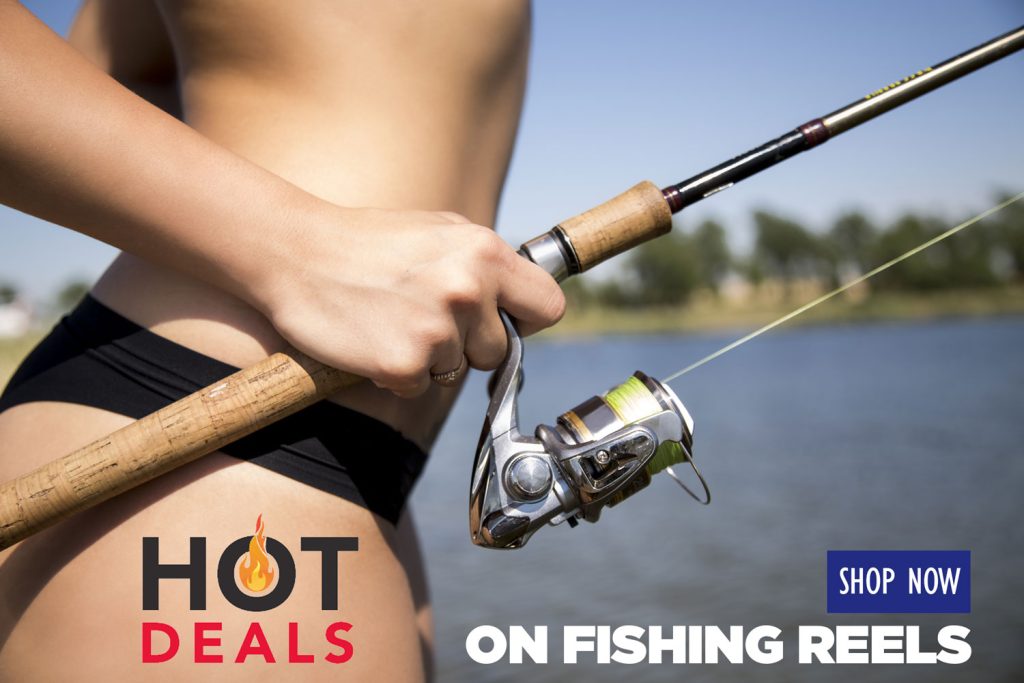To select the best fishing line, match it to your targeted species and technique. Consider line strength, diameter, and material for optimal performance.
Selecting the right fishing line is crucial for angling success. It begins with understanding your primary fishing style, whether you’re casting lures, bottom fishing, fly fishing, or trolling. Each method demands different qualities in a line, such as sensitivity, castability, or durability.
Anglers also need to account for the environment they’re fishing in—clear waters might require a stealthier approach with a thinner, more invisible line, while abrasive environments demand tougher lines to resist wear. With a myriad of options available, from monofilament and fluorocarbon to braid, choosing the appropriate combination of strength, stretch, and visibility will greatly influence your catch rate. Line weight and compatibility with your reel and rod also play integral roles in assembling a balanced fishing setup ready for the challenges ahead.

Credit: www.floridasportsman.com
The Significance Of Choosing The Right Fishing Line
Every fisher knows the thrill of a good catch. Using the right fishing line is crucial. It can mean the difference between a successful trip and coming home empty-handed. Lines come in different materials and strengths. They match up with various fishing styles and environments. So, selecting the right one is a skill in itself. Let’s dive into how the line you choose affects your fishing success.
Properties That Impact Performance
A fishing line’s properties will directly influence how well you can fish. Here are key factors to consider:
- Strength: Known as ‘test’, it’s how much weight your line can hold without breaking.
- Diameter: Thicker lines are stronger but more visible to fish; thinner ones are less detectable.
- Flexibility: Lines with more ‘give’ can handle a fighting fish without snapping.
- Visibility: Clear lines help trick wary fish, while colored versions aid in tracking under water.
- Memory: Lower memory lines stay straight, leading to fewer tangles and longer casts.
- Material: Options include monofilament, fluorocarbon, and braid, each with unique traits.
The Effect On Your Catch Rate
The line you pick affects how many fish you bring in. Here’s why:
- Casting Precision: The right line allows for accurate casts, putting your bait right where the fish are.
- Sensitivity: Some lines help you feel the smallest nibbles, so you can react quickly.
- Durability: Strong, durable lines handle the rough conditions underwater, decreasing lost fish.
Remember, match your line to the fish you’re after and the place you’re fishing. Picking the ideal line can significantly raise your catch rate, making your fishing trips more fruitful.

Credit: en.wikipedia.org
Breaking Down Fishing Line Types
Choosing the right fishing line can make a huge difference in your catch. Different lines work better in different conditions and with varied techniques. Understand the types of lines to match your fishing style perfectly.
Monofilament Lines: Versatility At Play
Monofilament lines are a single strand choice, excellent for general use. They’re flexible, easy to handle, and have a controlled stretch that cushions against sharp tugs. Here’s why they stand out:
- Float: They sit on the water’s surface, which is great for topwater lures.
- Stretch: Good for fighting fish as it absorbs shocks.
- Color variety: Available in many hues, they blend with different waters.
Fluorocarbon Lines: The Invisible Edge
Fluorocarbon lines offer a near-invisible profile underwater. This quality makes them superior for sneaky approaches. Let’s outline their strengths:
- Low Visibility: Hard for fish to spot, leads to more bites.
- Water Resistance: They don’t absorb water, maintaining strength and durability.
- Sensitivity: Less stretch means you feel more subtle bites.
Braided Lines: Strength And Sensitivity
Braided lines combine multiple strands for incredible power and fine sensitivity. Anglers targeting big fish prefer them. Find out why they’re impactful:
- High Strength: Ideal for heavy cover or deep sea fishing.
- No Stretch: Direct feedback, detecting even light nibbles.
- Thin Diameter: Lets you spool more line on the reel.
Matching Line Types To Fishing Styles
Matching line types to your fishing style is crucial for a successful catch. Not all lines work the same. The right line improves casting, lure presentation, and bite detection. Let’s explore how to pair the perfect line with your favorite fishing style.
Baitcasting Vs. Spinning: Line Preferences
Baitcasting and spinning setups demand different lines. Each angler’s choice affects performance and success.
- Baitcasters often use heavier, abrasion-resistant lines.
- Monofilament provides easy handling for beginners.
- Braided line suits experienced baitcasters for its no-stretch, high sensitivity.
Conversely, spinning reels excel with lighter, more flexible lines. Finesse techniques flourish with these choices:
- Use thin, braided lines for longer casts and less drag.
- Fluorocarbon sinks fast and is nearly invisible underwater.
- Combine braid with fluorocarbon leaders for the best of both.
Fly Fishing: Specialty Lines For A Unique Approach
Fly fishing is an art form, requiring line types tailored to the technique. Specialty lines are designed for this purpose:
- Floating lines stay atop the water for dry flies.
- Sinking lines dive deep for wet flies and nymphs.
- Sink-tip lines mix both worlds, ideal for streamers.
Choosing the right weight and taper of line is key. It must match the rod and the fly for a precise cast.
| Fly Line Type | Use Case |
|---|---|
| Weight-Forward | Easy casting, versatile, popular for beginners to pros. |
| Double Taper | Delicate presentations, roll casting, longer lifespan. |
| Shooting Taper | Long distance casts, strength for larger flies and winds. |
Environmental Considerations
When selecting the best fishing line, environmental factors are crucial. You must choose a line that matches your fishing environment.
Saltwater Vs. Freshwater: Material Matters
Different waters mean different challenges. Saltwater can corrode certain materials, while freshwater may not have the same effect. Let’s explore the top considerations:
- Saltwater requires lines resistant to corrosion. Choose braided or fluorocarbon lines for longevity.
- Freshwater fishing allows for more variety. Monofilament lines work well in these environments.
| Water Type | Recommended Material |
|---|---|
| Saltwater | Braided, Fluorocarbon |
| Freshwater | Monofilament |
Temperature And Visibility: Adapting To Conditions
It’s important to consider the water’s temperature and visibility.
In cold waters, lines can become brittle. Fluorocarbon lines remain strong in low temperatures.
In murky waters, a line that blends in is best. Use a color closest to the water’s hue.
- Clear Waters: Opt for clear or low-visibility lines.
- Warm Waters: Monofilament lines are flexible and work well.
Analyzing Target Species
Choosing the right fishing line involves knowing the fish you’re after. Fish vary in size, speed, and habits. They live in different environments. Picking the perfect line starts with the species on your radar. Bigger fish need stronger lines. Fast swimmers require a line that won’t slow you down. Let’s dive into details.
Understanding Fish Behavior And Preferences
- Study fish habitats: Learn where your target species thrives.
- Know their diet: Fish with sharp teeth need a tough line.
- Assess their vision: Clear lines suit fish with good eyesight.
- Consider water conditions: Murky waters allow for thicker lines.
Line Strength And Diameter: Tailoring To The Prey
| Fish Type | Line Strength (lb test) | Line Diameter (mm) |
|---|---|---|
| Panfish | 2-6 | 0.10-0.20 |
| Bass | 6-12 | 0.20-0.30 |
| Catfish | 12-30 | 0.30-0.50 |
| Sharks | 30+ | 0.50+ |
Match line strength to fish size. Use a strong line for heavy fish. Thin diameters are less visible in water. They catch wary fish easier. Adjust your gear to ensure a successful catch.
Personal Casting Techniques
Personal casting techniques shape the choice of the ideal fishing line. Anglers must consider their unique style to maximize their success out on the water. Some prize precision, while others prioritize casting distance. Plus, the strength of the line and its ability to hold a secure knot are crucial factors, ensuring that the big catch doesn’t get away.
Accuracy Vs. Distance: What’s Your Priority?
Focusing on accuracy or distance affects the fishing line selection. For tight spots and fine-tuned targeting, a line that allows for precise casts is vital. On the other hand, open-water fishing or chasing species that bite further out may require a line crafted for longer casts.
- Thinner lines enhance accuracy and reduce visibility to fish.
- Thicker lines offer more power for distance but can be noticeable to fish.
- Materials like braid are great for distance without sacrificing too much accuracy.
Handling And Knot Strength: Ensuring Reliability
The reliability of a fishing line comes from its handling and knot strength. A line that ties well and maintains its strength is ideal for anglers who regularly adjust their set-up.
| Line Type | Handling | Knot Strength |
|---|---|---|
| Monofilament | Easy to handle | Strong knots |
| Fluorocarbon | Medium handling | Very strong knots |
| Braided | More challenging | Requires specific knots |
Select a fishing line that aligns with personal techniques for a rewarding and efficient experience on the water. With the right line, you can cast with confidence and secure your prize catch without worry.
The Role Of Gear Compatibility
The Role of Gear Compatibility cannot be overstated when choosing the best fishing line for any fishing style. The proper match between the fishing line and the other equipment is crucial.
Reel And Rod Pairing: Finding The Sweet Spot
Match your reel and rod to ensure the best performance. A good match makes casting smoother and reeling in the catch easier.
- Check the rod’s specifications for line weight and type.
- Align these specs with the reel’s capacity.
Finding the sweet spot is about balancing flexibility and strength.
| Rod Action | Line Weight | Reel Type | Suitable Line |
|---|---|---|---|
| Fast | Heavy | Baitcasting | Braided |
| Medium | Medium | Spinning | Monofilament |
| Slow | Light | Spincast | Fluorocarbon |
Use the table as a guide for gear pairing.
Testing Line With Your Equipments
After pairing, test your line with your gear.
- Spool the line onto the reel.
- Thread it through the rod’s eyelets.
- Practice casting in a safe area.
Note any issues with casting distance or line control. Adjust as necessary.
Keep testing until you achieve the desired performance.
Field Testing And Community Wisdom
Choosing the right fishing line often comes down to the blend of field testing and community wisdom. Hands-on experiences coupled with advice from seasoned anglers make a substantial difference. The process involves experimenting with various line types under different conditions and listening to stories from the fishing community. Here’s how to navigate these waters:
Learning From Personal Experience
Field testing is the surest way to understand which line works best for individual fishing styles. Anglers should consider these points:
- Target Species – Select a line that can handle the fish size and fight.
- Water Conditions – Clear lines for clear waters, and heavier lines for murky environments.
- Casting Accuracy – Test different lines to see which increases precision.
- Sensitivity – Use a line that transmits bites and nibbles swiftly.
- Strength and Durability – Observe if the line withstands abrasion and doesn’t snap easily.
- Memory – Look for lines that don’t kink to ensure better reel operation.
Tapping Into Angler Networks For Insights
Community wisdom plays a critical role in fishing line selection. Anglers can:
- Join fishing forums and online groups to get opinions.
- Visit local bait shops to chat with expert staff for recommendations.
- Observe what lines others use at popular fishing spots.
- Attend fishing expos and seminars to learn from the pros.
- Read reviews and watch tutorials on suitable fishing lines.
In summary, testing different fishing lines and absorbing collective insights can lead to optimal gear choices. Embrace trial and experimentation while honoring the know-how of experienced fishers. The perfect line awaits those who seek it with dedication and an open mind.
Maintenance And Upkeep Of Fishing Lines
The maintenance and upkeep of fishing lines are vital to the success of any angler. Proper care ensures not only longer-lasting lines but also a better fishing experience. Learn the essentials of line management to make every cast count.
Caring For Your Line To Extend Its Life
Regular cleaning and inspection are key for maintaining line quality. Follow these steps:
- Wipe down the line after each use to remove debris and salt.
- Use mild soap and water for a thorough clean every few trips.
- Store the line in a cool, dry place away from sunlight.
- Avoid kinks by reeling in properly and using line conditioners.
When To Replace: Signs Of Wear And Tear
Stay alert for these signals that it’s time for a line change:
| Sign of Wear | Action to Take |
|---|---|
| Fraying | Consider replacing soon. |
| Memory | Condition line or replace if persistent. |
| Brittleness | Replace to avoid line breakage. |
| Faded color | Though cosmetic, could indicate UV damage. |
Regular care and timely replacements are essential for the best fishing performance. Keep these tips in mind to ensure your line remains strong and reliable in any fishing style.

Credit: www.fishingtackleshop.com.au
Conclusion: Maximizing Success On The Water
Maximizing Success on the Water is essential for any angler’s contentment and achievement. Picking the right fishing line matches your fishing style. It paves the way to a memorable catch. Let’s recap important details and anticipate your journey towards fishing mastery.
Recap: Key Points To Remember
- Match the line with your target species.
- Know the water conditions – clear or murky?
- Consider the weight of the line for casting distance.
- Choose the right color based on visibility.
- Test the line’s strength against fish size.
- Balance flexibility and sensitivity, vital for feeling bites.
Continuous Learning As An Angler
Keep updating your knowledge and your tackle box. Experiment with different lines. See what works best for you. Ask fellow anglers, read articles, and watch tutorials. Every trip can teach you something new about your style and the best line to use.
| Type of Line | When to Use | Benefits |
|---|---|---|
| Monofilament | All-purpose | Stretch and forgiveness |
| Braided | Heavy cover | Durability and strength |
| Fluorocarbon | Clear water | Invisibility underwater |
Frequently Asked Questions On How Do You Determine The Best Fishing Line For Your Fishing Style?
What Factors Affect Fishing Line Selection?
Selecting a fishing line involves considering water conditions, target species, and fishing technique. Factors such as line strength, visibility, and stretch influence performance and success rates.
How To Match Fishing Line With Rod Power?
Match the line strength to the rod’s power rating. Light power rods pair with thin lines, while heavy rods require stronger, thicker lines. This balance ensures optimal casting and fish fighting abilities.
Why Consider Line Stretch In Fishing?
Line stretch affects sensitivity and hook-setting power. Low-stretch lines offer better feedback for detecting bites, whereas high-stretch lines provide shock absorption during fierce strikes from powerful fish.
Does Line Color Impact Fishing Success?
Line color can impact success by influencing its visibility to fish. Clear lines are versatile, while colored options might blend with specific environments, reducing the chance of spooking the fish.
Conclusion
Selecting the right fishing line is crucial for angling success. Match your line to the environment and your target species. Balance strength, sensitivity, and weight. Seek expert advice, and don’t shy from experimenting. The perfect cast needs the perfect line—find yours and enhance your fishing game today.

